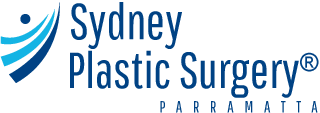Scar Revision treatment is a medical procedure that is suited for people who want to relieve themselves of scar marks. The scars are a reason of some accident, injury or birth defect. Some of the scars that appear on the visible parts of the body can look very unsightly. There are three types of scar revision treatments depending on the type of wound:
- Z-plasty is conducted to remove massive scars which may be a result of burning. These types of scars are usually called hypertrophic scars; the scars may also be painful. Z plasty involves making small V-sixed cuts at the boundary of the scars to make the scars less prominent.
- Another skin revision treatment is skin grafting in which a thin healthy skin tissue is taken from another part of the skin and placed on the scar. The procedure involves the transferring of healthy nerve tissues, muscles, skin and blood vessels from one part of the skin to the affected part of the scar. The treatment is well suited when a large part of the skin is wounded due to an injury.
- The technique of tissue expansion is used to treat scars due to birth defect or childhood injuries. A silicone balloon is inserted inside the skin and slowly salt water is filled in it. The skin expands and the scar slowly goes away.
Who should have scar revision treatment?
If you have a scar that is in a visible area in the body and makes you self conscious, you should definitely go for the surgery. If you have any birth scar or any childhood injury that is very prominent you should take the treatment. If you have been in an accident or have experienced deep, prominent and visible wounds then take the scar revision treatment.
What are the risks involved in the treatment?
The general risks involved are problem in breathing due to the effect of anaesthesia and reaction due to post-operative medications. Occasionally the wound may develop an infection in which case you should immediately visit your doctor. Very rarely Keloid formation may occur which may lead to a recurrence of the scar.
Recovery
The stitches are removed in 6-7 days after which the patient can resume his normal life. However, skin irritation in the affected area should be avoided and you should stay away from the sun or use a band-aid to prevent the tanning of the treated scar. You should usually avoid doing stretching exercises that may lead to unnecessary stretching of the scar.
Cost of the Procedure
Please view our latest price list >>
Frequently Asked Questions
Are there any side effects?
The only side effects that can occur is due to anaesthesia or post-operative medications. You should talk to your surgeon and tell him about your allergies if you have any.
Do I need to continuously follow up with my surgeon?
The need for follow up is only during a couple of weeks when the healing process is going on. After the healing process is over, you can resume with your normal day to day activities.
What are the risks associated with this procedure?
Plastic surgery, like any surgical procedure, carries inherent risks and potential complications.
Please read our Risks and Complications of Plastic Surgery page.
